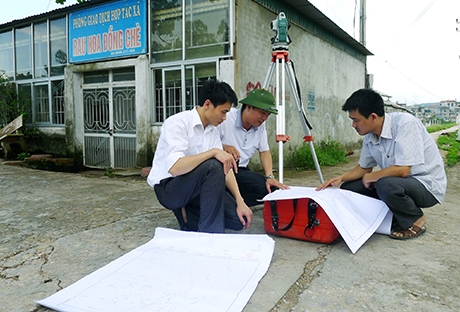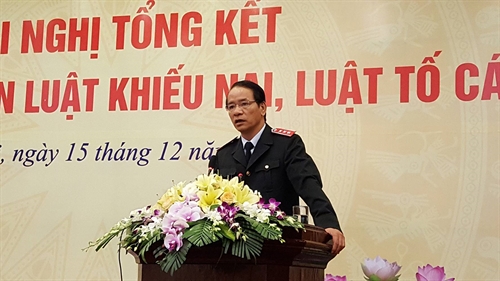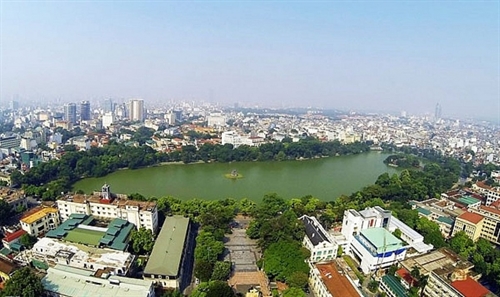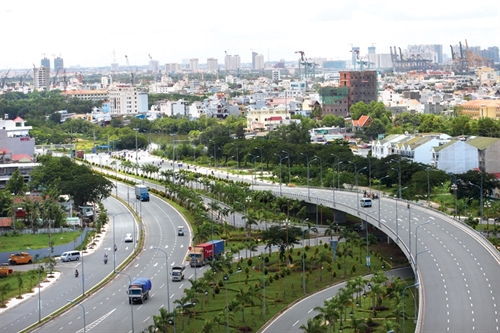The Law amending 37 laws related to the Planning Law (the Law) was passed at the sixth session of the 14th National Assembly in November last year.
Codes and laws revised under the Law include the Vietnam Maritime Code, Labor Code, Law on Inland Waterway Navigation, Law on Road Traffic, Law on Biodiversity, Law on Environmental Protection, Law on Marine and Island Resources and Environment, Land Law, Mineral Law, Law on Water Resources, Law on Hydro-meteorology, Law on Urban Planning, Law on Hydraulic Work, Law on Dikes, Railway Law, Law on Cyberinformation Security, Law on National Defense and Security Education, Law on Plant Protection and Quarantine, Law on Thrift Practice and Waste Combat, Law on Product and Goods Quality, Law on Atomic Energy, Customs Law, Press Law, Construction Law, Securities Law, Publishing Law, Law on Measurement, Cinematography Law, Law on Standards and Technical Regulations, Law on Management and Use of State Capital Invested in Production and Business at Enterprises, Law on Advertising, Petroleum Law, Law on Social Insurance, Law on Health Insurance, Law on Prevention and Control of Infectious Diseases, Law on Judicial Expertise, and Law on Protection of Consumer Rights.
The revision aims to create a unified legal system on planning activities, with the Planning Law governing planning work and specialized laws providing technical regulations, standards and conditions.
In light of this, the Law abolishes product master plans which are currently elaborated by state management agencies to fix a specific quantity or volume for goods production or service provision, which are believed to be obstacle hindering investment, production and business activities of people and enterprises. This move is expected to create a breakthrough in boosting administrative procedure reform and building a public, transparent and open business environment.
In order to ensure other laws’ consistency with the List of national-level sectoral master plans and the List of technical and specialized master plans provided in Appendices to the Planning Law, the Law changes the names and types of several existing master plans. For instance, master plan on rural construction is now renamed as rural area master plan; meanwhile, general and specialized master plan on hydraulic work are replaced with master plan on hydraulic work for inter-provincial river basins and master plan on hydraulic structure systems concerning two or more provinces or centrally run cities.
Another important content of the Law is provisions stating that national-level sectoral master plans will be detailed in a decree guiding the implementation of the Planning Law. Therefore, specialized laws will only set principles, grounds and requirements of master plans in relevant sectors as well as identify the competence to elaborate, appraise and approve master plans without devising specific contents of these master plans.
The Law also stipulates in detail the type, level, scope, and major contents of technical and specialized master plans currently provided in specialized laws so as to avoid overlaps among these master plans as well as ensure the consistency between them and the Planning Law. For example, at the provincial level, construction master plans, land use master plans and master plans of other infrastructure sectors will be integrated in a single provincial-level master plan.
Additionally, to simplify administrative procedures and ensure adherence to the principle of publicity and transparency in planning activities, the Law abolishes construction planning permit specified in the Law on Construction and urban planning permit and planning certificate specified in the Law on Urban Planning.
Amendments to the Land Law’s provisions on land use master plans and plans are also noticeable. Accordingly, a land use master plan will be formulated for every 10-year period with a vision ranging between 30 and 50 years, at the national level, or between 20 and 30 years, at the district level. National- and provincial-level land use plans and plans on use of land for national defense and public security purposes will be elaborated once every 5 years, while district-level land use plans will be made every year.
Besides the above-said 37 laws, 15 documents related to the Planning Law, including 11 laws and four ordinances, were amended last year in a move to ensure synchronous enforcement of the Planning Law from January this year. These documents are the Law on Food Safety, Law on Notarization, Law on Pharmacy, Law on Investment, Law on Public Investment, Electricity Law, Law on Chemicals, Law on Science and Technology, Law on Prevention and Control of Tobacco Harms, Law on Economical and Efficient Use of Energy, Law on Children; Ordinance on the Defense Industry, Ordinance on Market Management, Ordinance on Library and Ordinance on Preferential Treatment of People with Meritorious Services to the Revolution.
The Government and Prime Minister have also directed related ministries and sectors to soon issue guiding texts of the Planning Law and detailed instructions on formulation, appraisal and approval of technical and specialized master plans, in parallel with formulating master plans for the 2021-30 period.- (VLLF)









